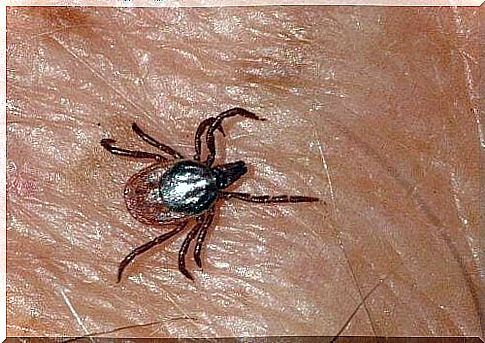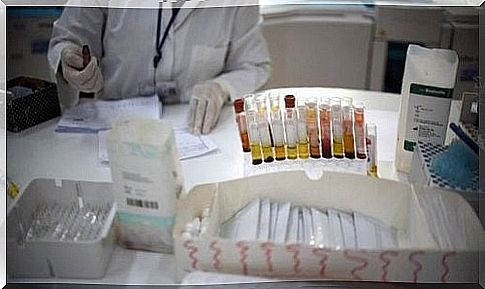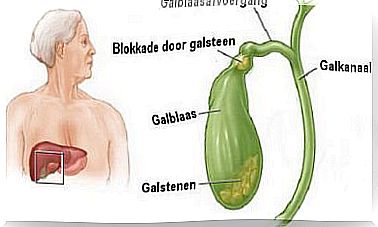Crimean Congo Virus Cases Found In Spain

On August 25, 2016, a 62-year-old man died of the Crimean Congo virus in Madrid, Spain. This event has caused a lot of concern.
That said, it is important to know that the Crimean Congo virus is not a new disease at all. The disease has even occurred in Spain before.
The first victims in Spain
Later, someone else became infected with this virus. Namely, the sister who cared for the 62-year-old man was also in critical condition herself. The sister was even in isolation and in a special ward. A department best able to treat this contagious disease transmitted by ticks.
Do not panic
Despite this shocking news, experts say it’s important not to panic. Many have compared this disease to the Ebola virus. But there is really no reason at all to come to this wrong conclusion.
In this article we therefore share the most important information available about the Crimean Congo virus, in case the disease spreads to other parts of the world, such as our small Netherlands.
What is the Crimean Congo Virus?
The World Health Organization defines this virus as a type of viral hemorrhagic fever. A fever that can be fatal in about forty percent of cases.

We are now aware of the following details about the Crimean Congo virus:
- It is a type of virus that originates from the Bunyaviridae family.
- It is spread by ticks, mosquitoes, pests and through direct physical contact with infected livestock.
- It is only transmitted from person to person when there is direct contact with blood, secretions or other bodily fluids.
How can you get infected?
Contamination via air is excluded. That is, this disease cannot be transmitted by airborne infections, only through liquid.
This explains why the sister who cared for the 62-year-old man was able to contract the virus.
- Crimean Congo virus is an epidemic in Africa, the Middle East, Asia and the Balkans.
- It is a common disease in countries that are below 50 degrees north latitude.
What are the symptoms of this virus?
After someone has been bitten by a tick or after coming into contact with the blood or other bodily fluid of an animal infected with this virus, there is an incubation period of three days.
- After this period, the infected person may experience fatigue, muscle aches, headaches, dizziness, a stiff neck and light sensitivity.
- Some other symptoms include swelling in the liver or spleen (hepatomegaly). This is also often accompanied by swelling in the lymph nodes, strokes, high body temperature and confusion.
As we mentioned earlier in this article, the chance of death in the case of the Crimean Congo virus is about 40 percent. Many patients die two weeks after contracting this virus.
Is there a vaccine against it?
Unfortunately, there is currently no vaccine for this virus. Nevertheless, there are very few cases where this disease fully develops.
Should I be concerned?

The short answer to this question is ‘no’. As experts also pointed out, the Crimean Congo virus is not easily transmitted. Moreover, this is not the first time that this virus has appeared in countries such as Spain.
- For example, in 2011, the pathogen present in this disease was also found in a herd of deer in Cáceres, Spain.
- In addition, it is important to remember that this virus can only fully develop in humans and not in animals. That is why there are no visible symptoms in animals such as deer, cows, pigs, rats, etc.
- The people who are most at risk of being infected with this virus are therefore people who regularly come into contact with livestock.
- Nevertheless, because animal studies are regularly conducted on farms, it is not often that this virus spreads very widely.
Who is most at risk?
In fact, almost no one often comes into direct contact with physical secretions and excretions from animals. Still, health professionals and people who work on a farm or in a slaughterhouse are more at risk of being infected with this virus.
In conclusion, it is important to remain calm and ensure that you remain well informed about the Crimean Congo virus.
How come this virus has reached Spain?
Medical experts working at the Carlos III Hospital in Madrid, the same hospital that cared for the infected sister, indicate that viruses pose a daily risk to humans anyway.
For example, international travel, importing animals and the globalized world we live in all create an environment in which pathogens and infectious agents can easily spread from one country to another.

However, health authorities have prepared well for the Crimean Congo virus. They adhere to all protocols and have examined 190 people who may be infected with the virus.
Can the Crimean Congo virus be treated?
As we mentioned at the beginning of this article, there is no vaccine for this virus. However, it can be treated. Doctors today use ribavirin to treat the infection and so far the results of this treatment have been very satisfactory.
Finally, it’s important to point out that the virus was potentially fatal for the 62-year-old man we talked about at the beginning of this article, because he suffered from a previous health condition or a very weak immune system.
As far as we are concerned, it is important to remain calm and well informed.









